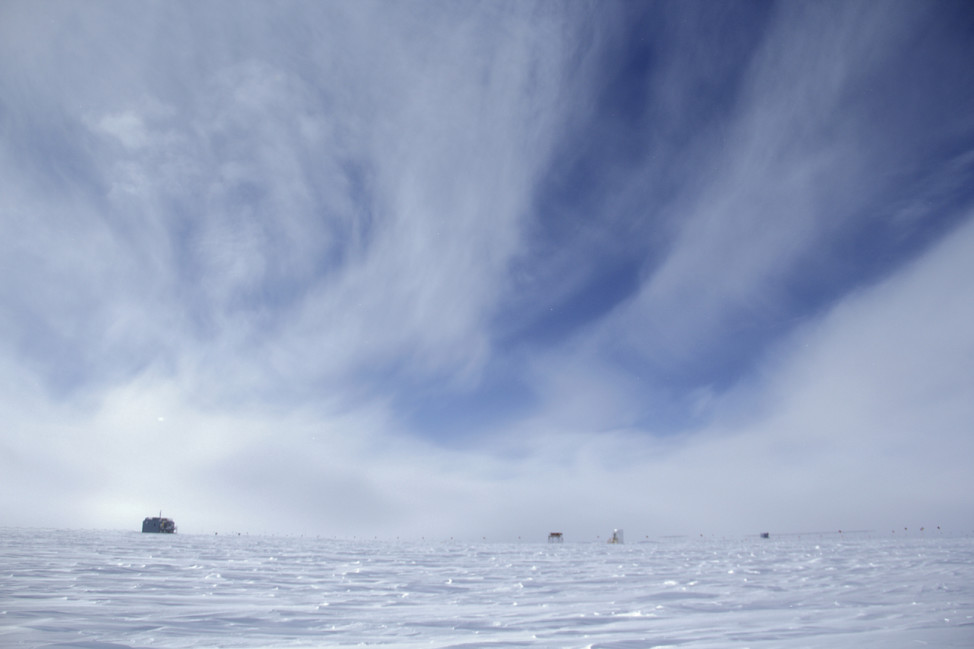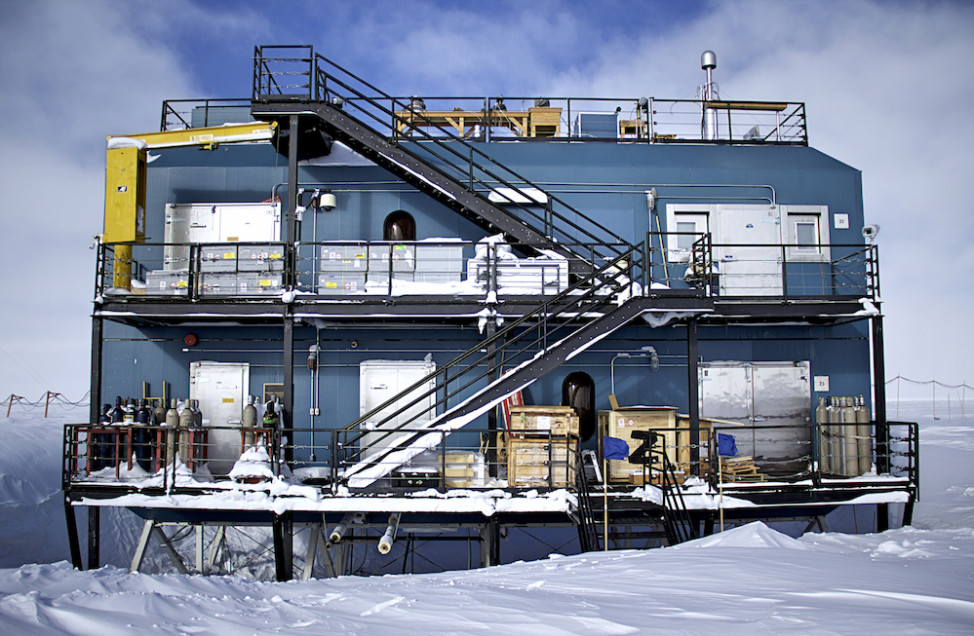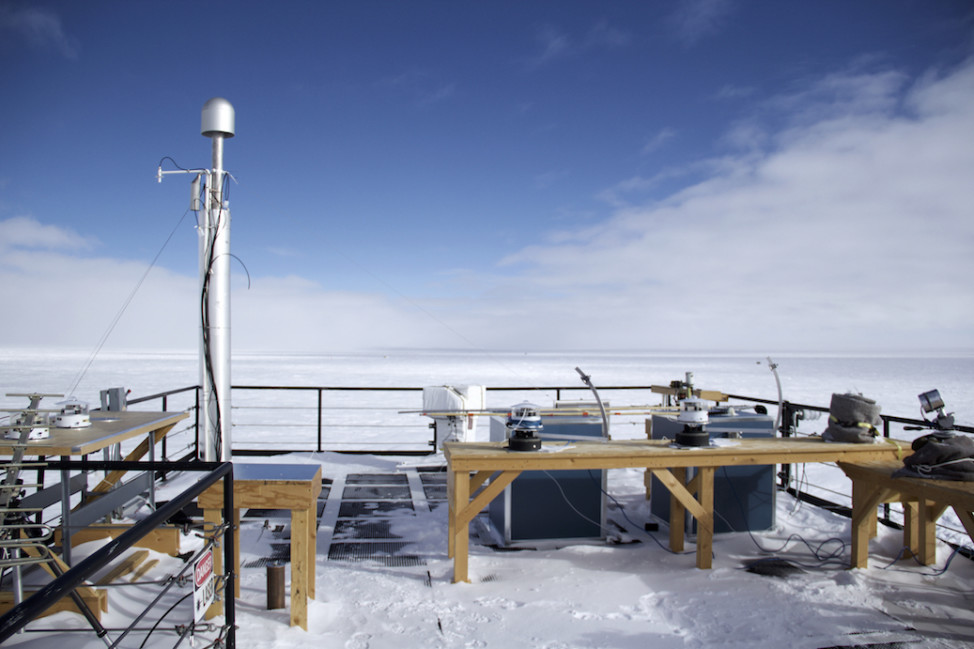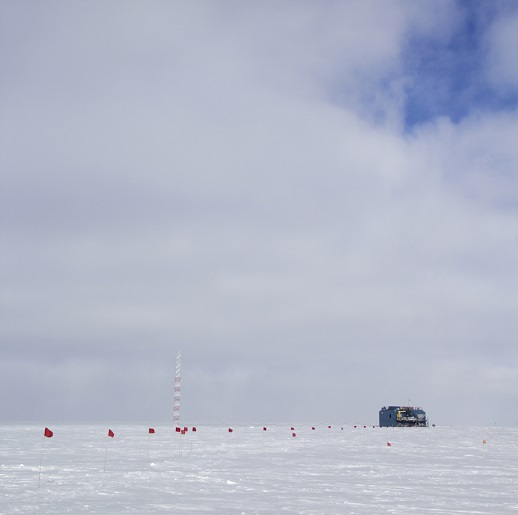
A vast, empty landscape surrounds the Atmospheric Research Observatory (ARO) at the South Pole. The upwind side of the station (left) is the clean air sector. (Photo by Hunter Davis)
Cardinal directions become meaningless at the South Pole.
There is no east, west or south. You are at the bottom of the world. Any direction you move is north. This makes certain tasks complicated, like giving someone directions to a building they have never been to before, or trying to describe which way the wind is blowing.
SOUTH POLE JOURNAL
Refael Klein is blogging about his experiences as he spends a year working and living at the South Pole. Read his earlier posts here.
To overcome these difficulties, and to lend some type of geospatial acumen to everyday life, the station has developed a “Grid System.”
The South Pole is our origin, and north, south, east and west emanate from its center. It’s like living on a giant sheet of graph paper. The world may be round, but its flat here, at least when it comes to not getting lost.
A quarter-mile grid north-east from the Pole, sits the Atmospheric Research Observatory (ARO), a National Science Foundation facility. The rectangular, seaweed-green building is two stories tall and sits atop an elevated steel foundation anchored into the ice below. From afar, it looks like an artist’s rendering of a moon base that you may have seen in an old edition of a science magazine.

NOAA shares space at the Atmospheric Research Observatory (ARO) with research projects from NASA, international research institutions, and universities. (Photo by Hunter Davis)

ARO’s rooftop is home to NOAA’s suite of solar radiation equipment. (Photo by Hunter Davis)
ARO was built in 1997, dedicated in 1998, and since then has been continuously pummeled by the harsh Antarctic weather. As a tall, artificial structure on an otherwise flat, featureless plane, it has become a windbreak for blowing snow.
Massive drifts pile up each year around the station, and each summer it takes a bulldozer a few hours to clear a drivable path to the building’s cargo deck. Despite our best efforts to keep ARO above the snow, Mother Nature is ultimately winning. Plans are being made to raise the building a few feet higher and, rumor has it, the “big lift” might take place as soon as next year.

During white out conditions, personnel follow flag lines between the main building and the ARO. (Photo by Hunter Davis)
NOAA’s Global Monitoring Division’s (GMD) South Pole Baseline Observatory is ARO’s main occupant. The rooftop is home to our solar radiation instruments and the two main floors of the facility are filled with experiments studying carbon dioxide, ozone, (both surface and stratospheric), ozone depleting substances, and particulates in the air.
The goal of all these projects, and for GMD as a whole, is to measure the global background levels of key substances that affect climate change. To accomplish this, the building and our air sampling towers have been located upwind of the rest of Amundson Scott Station, and the region upwind of us has been defined as the Clean Air Sector; no vehicle or foot traffic allowed.
It’s an endless expanse of windswept ice cap, cut off from any direct anthropogenic (human made) source of pollution, making the air we sample the cleanest air on earth, and the data we collect representative of our entire planet.
Wind blows clean for us 90 percent of the year. I take advantage of its consistency as much as I can, and frequently find myself standing on top of ARO’s roof — face into the frozen breeze — gazing towards the horizon.
It’s a barren landscape everywhere you look, not unlike the view you would have if you were floating on a ship in the middle of the Pacific Ocean. When the sun is behind you, the wind-carved ice looks like foam-capped waves and every time you breathe you expect to taste salt.
Look for Refael Klein’s weekly blogs from the South Pole here on Science World.























Its quite passionating seeing what you are doing to help us know more about the south pole